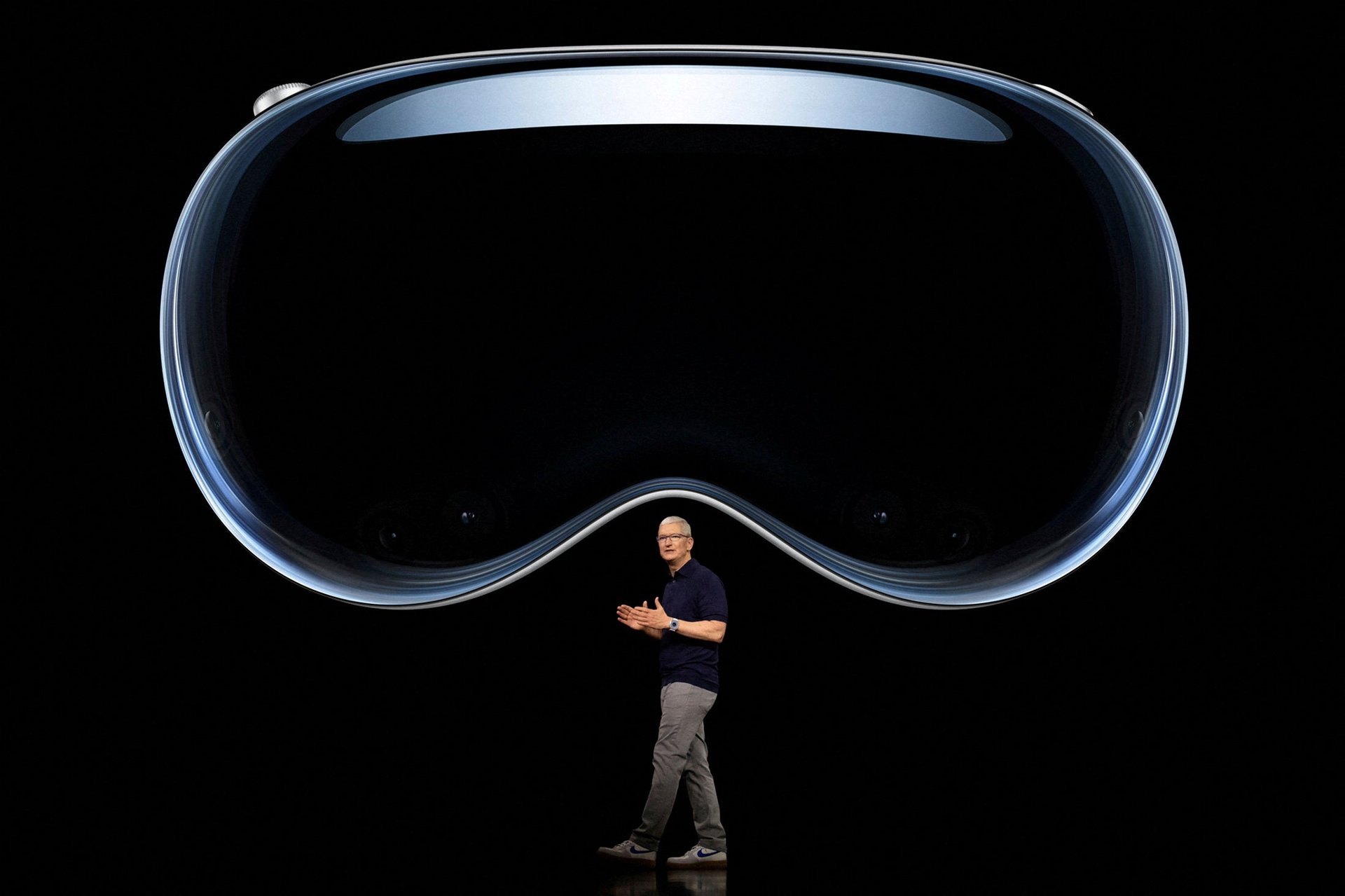All the buzzwords Apple avoided in its headset demo yesterday
The Vision Pro headset is here—but Apple is definitely not calling it a “headset”

Apple launched its Vision Pro virtual reality headset yesterday (June 5) during the 2023 Worldwide Developers Conference (WWDC)—but it deliberately avoided both the terms “virtual reality” and “headset” in talking about the device.
Suggested Reading
In fact, the language used to debut the product was precise in many ways. “It’s not often we get the chance to define an entirely new category,” said Richard Howarth, Apple’s vice president of industrial design, during the presentation.
Related Content
Part of defining that “new category”—in a world where mixed reality headsets already exist—was excluding some popular terms from the tech lexicon altogether. Here are some buzzwords that got no mention at all in Apple’s demo.
Virtual Reality
Apple billed the Vision Pro as an “augmented reality” device, emphasizing that it’s all about “seamlessly blending the real world with the digital world.” Though the headset is capable of virtual reality experiences, that may have come off too niche or impersonal for Apple to highlight during the product’s debut, especially when marketing it to families and professionals.
Metaverse
The term “metaverse,” which now carries the distinct whiff of failure, didn’t appear at all in the Apple presentation. Even as tech giants like Facebook, Microsoft, and Disney are rolling back their metaverse ventures, Apple seems to be steering clear of that sinking ship, both to distinguish itself from its peers and avoid entanglement in the wreckage.
AI
The apocalyptic panic around AI and its speedy development would perhaps have been unwise to bring up during the presentation. But Siri, Apple’s AI-powered virtual assistant, did appear once as an animated, floating orb.
By way of notional substitute, the word “magical” was used on multiple occasions, as if to give everything a distinctly human touch. Cue one scene of a woman wearing a Vision Pro and interacting with a loved one, and another of a shaggy-haired dad in his kitchen talking to his child while wearing the headset—and you could still see everyone’s eyes through the glass! (Apple mentioned this as an intentional part of the design.) Clearly, Apple wants its Vision Pro to feel familiar and domestic, and not so sophisticated that it becomes formidable.
Headset
Apple’s Vision Pro is clearly a headset: goggles, stretchy strap and all. But the company is avoiding any association with such a pedestrian product category. Instead, Apple referred to the Vision Pro as a “wearable spatial computer,” and belonging more generally to a class of “head-worn systems.”
Any direct mentions of the human noggin came in one segment about the headset’s design, where the Vision Pro was referred to as a “product” and “form.”
Howarth also mentioned: “We studied thousands of heads to get a detailed understanding of the huge variation in cheek width, face angle, and head shape.” Which sounds a little like hi-tech phrenology, but we digress.
Avatar
Apple didn’t use the word “avatar,” instead opting for “persona,” perhaps once again distancing itself from language related to failed metaverse attempts.
A user’s “persona” can be deployed during FaceTime calls, to ensure that they appear without a buggy, ski-slope look to their image. Front sensors on the headset scan their face and use an “encoder-decoder neural network” (surely a name drop by Apple’s data scientists) to create a virtual version of their face.
Simulation
There was also no mention of visuals being “simulated” or of “computerized simulations,” likely given their slightly dystopian, Matrix-y connotations. Instead Apple emphasized being “immersed” while using the device, making the world your “canvas.”
Related stories
📈 Apple’s Vision Pro VR headset announcement did more for shares of Unity than for Apple
